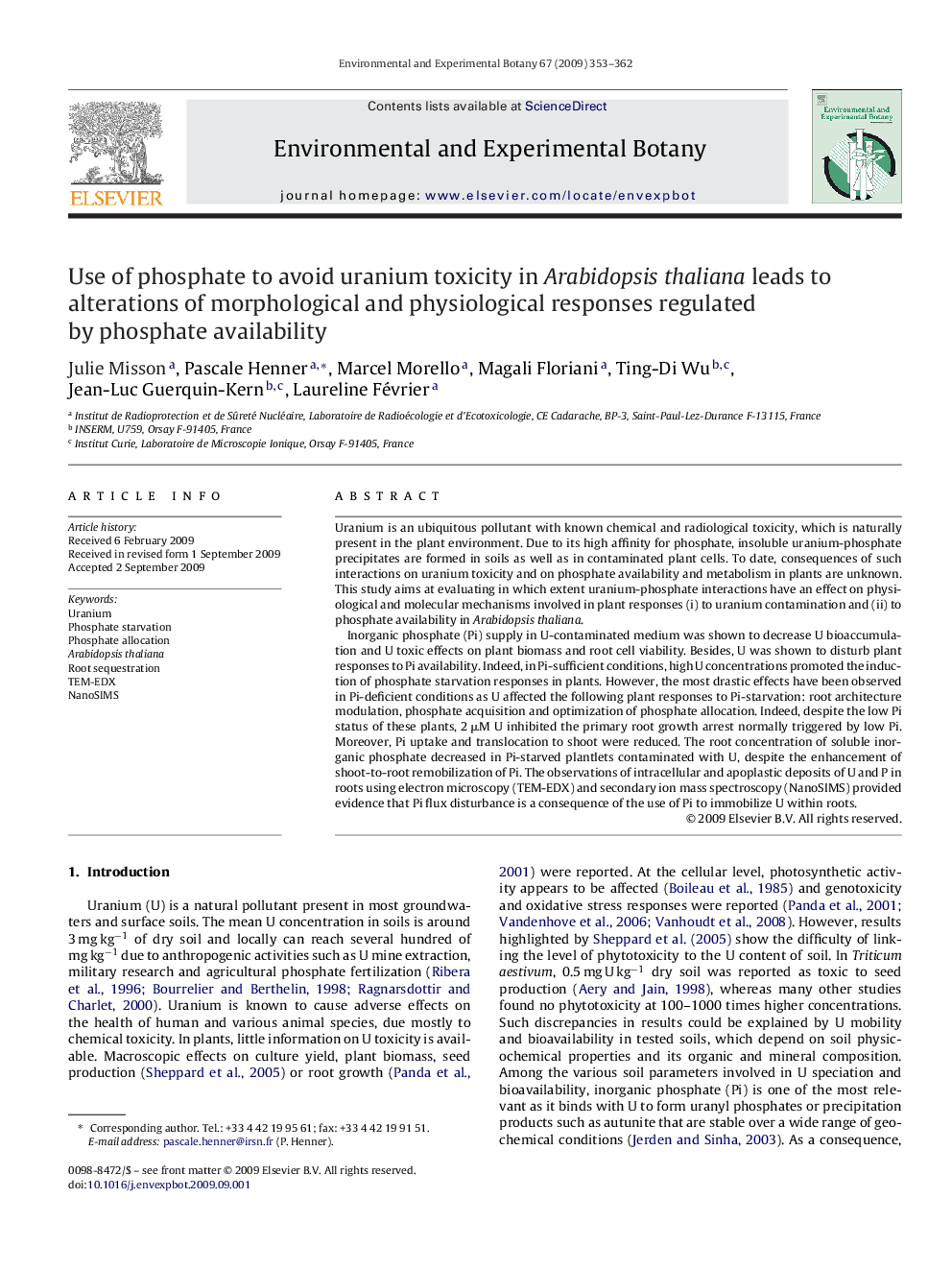| Article ID | Journal | Published Year | Pages | File Type |
|---|---|---|---|---|
| 4554970 | Environmental and Experimental Botany | 2009 | 10 Pages |
Abstract
Inorganic phosphate (Pi) supply in U-contaminated medium was shown to decrease U bioaccumulation and U toxic effects on plant biomass and root cell viability. Besides, U was shown to disturb plant responses to Pi availability. Indeed, in Pi-sufficient conditions, high U concentrations promoted the induction of phosphate starvation responses in plants. However, the most drastic effects have been observed in Pi-deficient conditions as U affected the following plant responses to Pi-starvation: root architecture modulation, phosphate acquisition and optimization of phosphate allocation. Indeed, despite the low Pi status of these plants, 2 μM U inhibited the primary root growth arrest normally triggered by low Pi. Moreover, Pi uptake and translocation to shoot were reduced. The root concentration of soluble inorganic phosphate decreased in Pi-starved plantlets contaminated with U, despite the enhancement of shoot-to-root remobilization of Pi. The observations of intracellular and apoplastic deposits of U and P in roots using electron microscopy (TEM-EDX) and secondary ion mass spectroscopy (NanoSIMS) provided evidence that Pi flux disturbance is a consequence of the use of Pi to immobilize U within roots.
Related Topics
Life Sciences
Agricultural and Biological Sciences
Ecology, Evolution, Behavior and Systematics
Authors
Julie Misson, Pascale Henner, Marcel Morello, Magali Floriani, Ting-Di Wu, Jean-Luc Guerquin-Kern, Laureline Février,
